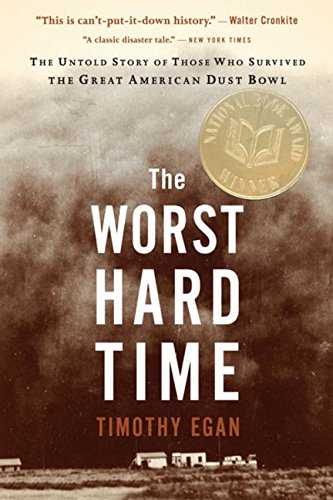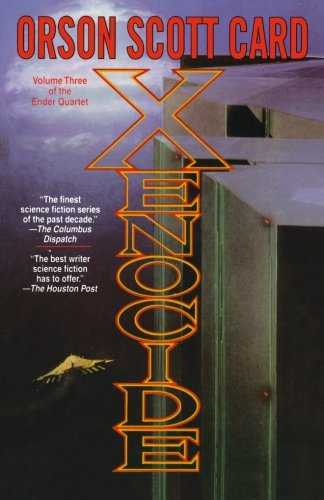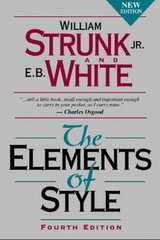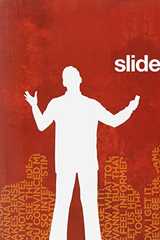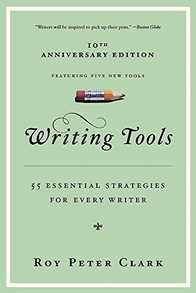
Writing Tools: 50 Essential Strategies for Every Writer
byRoy Peter Clark
Writings Tools is a writer's of writer to be's toolbox for improving upon their craft. The book covers 50 Tools (tips) organized by four categories, Grammatical Reminders, Stylist Elements, Planning and Structure and General Writing Life Strategies. Writing Tools has many principles to guide your writing and the book itself is well structured and organized. There are times where I felt like the book had too many examples and quotes which diluted the essence of the book a bit.
Motivations to Read
I used to dislike writing in college, but later in my college career when I wrote an essay on the troubles regarding my college's lack of investments in technology, I first hand experienced the power of how written words can spread and impact the conversation like wildfire. I want to continue making investments in improving my writing as it is a medium of communication I feel like personality can wield more fluidly to communicate with. I want to be a writer, and have a habit of writing everyday, these tools I hope will help my sharpen my skills.
3 Reasons to Read
- A collection of 50 writing tools to help improve your writing
- Improve your writing style and find your writing voice
- Provides more than 200 examples from literature and journalism to illustrate the concepts.
Notable Quotes
“Everyone should read, we say, but we act as if only those with special talent should write.” Roy Peter Clark
“All of us possess a reading vocabulary as big as a lake but draw from a writing vocabulary as small as a pond. The good news is that the acts of searching and gathering always expand the number of usable words.” Roy Peter Clark
“If a period is a stop sign, then what kind of traffic flow is created by other marks? The comma is a speed bump; the semicolon is what a driver education teacher calls a “rolling stop”; the parenthetical expression is a detour; the colon is a flashing yellow light that announces something important up ahead; the dash is a tree branch in the road.” Roy Peter Clark
Writing Tools: 50 Essential Strategies for Every Writer Notes & Summary
WRITING TOOLS
Reminders when reading:
- Remember, these are tools, not rules.
- Do not try to apply these tools all at once.
- You will become handy with these tools overtime.
- You already use many of these tools without knowing it.
The Books is divided into four parts:
- Nuts and Bolts: strategies for making meaning at the word, sentence, and paragraph levels.
- Special effects: tools of economy, clarity, originality, and persuasion.
- Blueprints: ways of organizing and building stories and reports.
- Useful habits: routines for living a life of productive writing.
Part One. NUTS AND BOLTS
1. Begin Sentences with subjects and verbs.
"Make meaning early, then let weaker elements branch to the right."
Grab the reader's attention.
2. Order words for emphasis.
"Place stronger words at the beginning and at the end."
Example quote:
"It was one horrible thing to watch," said Helen Amadio, who was walking near her Hampden Avenue home when the crash occurred. "It exploded like a bomb. Black smoke just poured."
3. Activate your verbs.
"Strong verbs create action, save words, and reveal the players."
Tense defines action within time - when the verb happens - the present, past, or future. Voice defines the relationship between subject and verb - who does what.
- If the subject performs the action of the verb, we call the verb active.
- If the subject receives the action of the verb, we call the verb passive.
- A verb that is neither active nor passive is a linking verb, a form of the verb to be.
James Bond author, Ian Flemming, NYTimes Writer Carlotta Gall and a number of others that use active verbs well tend to avoid verb qualifiers like:
| sort of | seemed to |
| tend to | could have |
| kind of | used to |
| must have | begin to |
4. Be passive-aggressive.
"Use passive verbs to showcase the "victim" of action."
Use passive verbs to call attention to the receiver of the action.
- Active verbs move the action and reveal the actors.
- Passive verbs emphasize the receiver, the victim.
- The verb to be links word and ideas.
5. Watch those adverbs.
"Use them to change the meaning of the verb."
"At their best, adverbs spice up a verb or adjective. At their worst, they express a meaning already contained in it:"
6. Take it easy on the -ings.
"Prefer the simple present or past."
Two reasons why -ings weaken a verb.
- When adding -ing, it adds an extra syllable to the word, which doesn't happen in most cases when you use -s or -ed. i.e Tricks, Tricked and then Tricking, which sounds like a different word.
- The -ing words can begin to resemble each other when too many are in a paragraph.
7. Fear not the long sentence.
"Take the reader on a journey of language and meaning."
Some strategies to achieve mastery of the long sentence:
- It helps if subject and verb of the main clause come early in the sentence.
- Use the long sentence to describe something long. Let form follow function.
- It helps if the long sentence is written in chronological order.
- Use the long sentence in variation with sentences of short and medium length.
- Use the long sentence as a list or catalog of products, names, images.
- Long sentences need more editing than short ones. Make every word count. Even. In. A. Very. Long. Sentence.
8. Establish a pattern, then give it a twist.
"Build parallel constructions, but cut across the grain."
"Use parallels wherever you can," wrote Sheridan Baker in The Practical Stylist, equivalent thoughts demand parallel constructions.
I great example of parallelism can be found in numerous Martin Luther King Jr speeches.
9. Let punctuation control pace and space.
Learn the rules, but realize you have more options than you think.
Punctuation does the following:
- Sets the pace of reading
- Divides words, phrases, and ideas into convenient grouping.
"If the period is a stop sign, then what kind of traffic flow is created by other marks?" The comma is a speed bump; the semicolon is what a driver education teacher calls a "rolling stop"; the parenthetical expression is a detour; the colon is a flashing yellow light that announces something important up ahead; the dash is a tree branch in the road."
10. Cut big, then small.
"Prune the big limbs, then shake out the dead leaves."
"If your goal is to achieve precision and concision, begin by pruning the big limbs. You can shake out the dead leaves later."
- Cut any passage that does not support your focus.
- Cut the weakest quotations, anecdotes, and scenes to give great power to the strongest.
- Cut any passage you have written to satisfy a tough teacher or editor rather than the common reader.
- Don't invite others to cut. You know the work better. Mark optional trims. Then decide whether they should become actual cuts.
Part Two. SPECIAL EFFECTS
11. Prefer the simple over the technical.
"Use shorter words, sentences, and paragraphs at points of complexity."
"Remember that clear prose is not just a product of sentence length and word choice. It derives first from a sense of purpose - a determination to inform. What comes next is the hard work of reporting, research, and critical thinking. The writer cannot make something clear until the difficult subject is clear in the writer's head. Then, and only then, does she reach into the writer's toolbox, ready to explain to readers, 'Here's how it works."
12. Give key words their space.
"Do not repeat a distinctive word unless you intend a specific effect."
Know the difference between intended and unintended word repetition. Certain words should have it's own word territory, it's own space so it stands out and holds it meaning.
13. Play with words, even in serious stories.
"Choose words the average writer avoids but the average reader understands."
"Too often, writers suppress their vocabularies in a misguided attempt to lower the level of language for a general audience. Obscure words should be defined in texts or made clear from context."
"A rich writing vocabulary does not require big or fancy words."
14. Get the name of the dog.
"Dig for the concrete and specific, details that appeal to the senses."
"At the St. Petersburg Times, editors and writing coaches warn reporters not to return to the office without "the name of the dog." That reporting task does not require the writer to use the detail in the story, but it reminds the reporter to keep her eyes and ears open."
"The good writer uses telling details, not only to inform, but to persuade."
15. Pay attention to names.
"Interesting names attract the writer - and the reader."
"What's in the name? For the attentive writer, and the eager reader, the answer can be fun, insight, charm, aura, character, identity, psychosis, fulfillment, inheritance, decorum, indiscretion, and possession. For in some cultures, if I know your name and can speak it, I own your soul."
16. Seek original images.
"Reject cliches and first-level creativity."
"Never use a metaphor, or simile, or other figure of speech which you are used to seeing in print," writes George Orwell in "Politics and the English Language." Using cliches, he argues, is a substitute for thinking, a form of automatic writing: 'Prose consists less and less of words chosen for the sake of their meaning, and more and more of phrases tacked together like the sections of a prefabricated hen-house.'"
17. Riff on the creative language of others.
"Make word lists, free-associate, be surprised by language."
"Riffing on language will create wonderful effects you never intended. Which leads me to this additional strategy: always take credit for good writing you did not intend because you'll be getting plenty of criticism for bad writing you did not mean either."
18. Set the pace with sentence length.
"Vary sentences to influence the reader's speed."
"The writer controls the pace for the reader, slow or fast or in between, and uses sentences of different lengths to create the music, the rhythm of the story."
Three reasons to slow the pace of a story:
- To simplify the complex
- TO create suspense
- To focus on the emotional truth
"So write with a combination of short, medium and long sentences. Create a sound that please the reader's ear. Don't just write words. Write music."
19. Vary the lengths of paragraphs.
"Go short or long - or make a turn - to match your intent."
"The paragraph is essentially a unit of thought, not of length", argues British grammarian H.W. Fowler in Morden English Usage.
Short paragraphs can give the reader a mental break.
The writer can also use short paragraphs after a long one, to bring the reader to a sudden, dramatic stop.
"Paragraphing is along a matter of the eye," writers Fowler. "A reader will address himself more readily to his task if he sees from the start that he will have breathing-spaces from time to time than if what is before him looks like a marathon course."
20. Choose the number of elements with a purpose in mind.
"One, two, three, or four: each sends a secret message to the reader."
"A self-conscious writer has no choice but to select specific number of examples of elements in a sentence or paragraph."
The language of one.
That girl is smart.
The language of two
That girl is smart and sweet.
The language of three
That girl is smart, sweet and determined.
The language of four and more
That girl is smart, sweet, determined, and neurotic.
- Use one for power.
- Use two for comparison, contrast.
- Use three for completeness, wholeness, roundness.
- Use four or more to list, inventory, compile, and expand.
21. Know when to back off and when to show off.
"When the topic is most serious, understate; when least serious, exaggerate."
Two modes of writing.
"The first is called understatement. The second is called overstatement or hyperbole".
"Here's a tool of thumb that works for me: The more serious or dramatic the subject, the more the writer backs off, creating the effect that the story tells itself. The more playful or inconsequential the topic, the more the writer can show off. Back off or show off."
22. Climb up and down the ladder of abstraction.
"Learn when to show, when to tell, and when to do both."
"The easiest way to make sense of this tool is to begin with its name: the ladder of abstraction. That name contains two nouns. The first is ladder, a specific tool you can see, hold with your hands, and climb. It involves the senses. [..] The second noun is abstraction. You can't eat it or smell it or measure it. It is not easy to use as a case study. It appeals not to the senses, but to the intellect. It is an idea that cries out for exemplification."
23. Tune your voice.
"Read stories aloud."
"To test your writing voice, the most powerful tool on your workbench is oral reading. Read your story aloud to hear if it sounds like you."
Part Three. BLUEPRINTS
24. Work from a plan.
"Index the big parts of your work."
"When the story grows to any significant length, the writer should label the parts."
25. Learn the difference between reports and stories.
"Use one to render information, the other to render experience."
"Reports convey information. Stories create experience. Reports transfer knowledge. Stories transport the reader, crossing boundaries of time, space, and imagination. The report points us there. The story puts us there."
How information is transformed into narrative:
- Who becomes Character
- What becomes Action. (What happened.)
- Where becomes Setting.
- When becomes Chronology.
- Why becomes Cause or Motive.
- How becomes Process. (How it happened.)
26. Use dialogue as a form of action.
"Dialogue advances narrative; quotes delay it."
"Human speech, captured as dialogue on the page, attracts the eyes of the reader and, if done well, advances the story."
"Get a good quote high in the story. A good quote offers these benefits:"
- It introduces a human voice.
- It explains something important about the subject.
- It frames a problem or dilemma.
- It adds information.
- It reveals the character or personality of the speaker.
- It introduces what is next to come.
Remember: "Quotes are about the action, not in the action. That's why quotes interrupt the progress of the narrative."
"While quotes provide information or explanation, dialogue thickens the plot. The quote may be heard, but dialogue is overheard."
27. Reveal traits of character.
"Show character-istics through scenes, details, and dialogue."
"The best writers create moving pictures of people, images that reveal their characteristics and aspirations, their hopes and fears."
28. Put odd and interesting things next to each other.
"Help the reader learn from contrast."
"Ironic juxtaposition is the fancy term for what happens when two disparate things are placed side by side, each commenting on the other."
29. Foreshadow dramatic events and powerful conclusions.
"Plant important clues early."
"Clues planted early in the story offered what a dictionary definition describes as "vague advance indications" of important future events."
30. To generate suspense, use internal cliffhangers.
"To propel readers, make them wait."
Snipper example from Dan Brown's The Da Vinci Code,
"As he fell, he thought for a moment he saw a pale ghost hovering over him, clutching a gun. Then everything went black."
31. Build your work around a key question.
"Stories need an engine, a question that the action answers for the reader."
"A story, especially one with subplots, can have mini-engines."
"We should note that some stories are driven not by what questions, but by how."
"Good writers anticipate the reader's questions and answer them. Editors will keep lookout for holes in the story where key questions are left unanswered. Storytellers take these questions to a narrative level, creating in the reader a curiosity that can only be quenched by reaching the end."
32. Place gold coins along the path.
"Reward the reader with high points, especially in the middle."
"How do you keep a reader moving through your story? We have described three techniques that do the trick: foreshadowing, cliffhangers, and story engines."
There is a fourth: Gold Coins.
"When readers encounter boring and technical information, especially at the beginning, they will expect more boring matter below. When readers read chronological narratives, they wonder what will happen next."
"Think of a gold coin as any bit that rewards the reader."
33. Repeat, repeat, and repeat.
"Purposeful repetition links the parts."
"Repetition works in writing, but only if you intend it. Repeating key words, phrases, and story elements creates a rhythm, a pace, a structure, a wavelength that reinforces the central theme of the work."
34. Write from different cinematic angles.
"Turn your notebook into a camera."
"Before there was cinema, writers wrote cinematically. Influenced by the visual arts - by portraits and tapestries - authors have long understood how to shift their focus in and out to capture both character and landscape."
"Simple descriptions of standard camera angles should help you imagine how to use your "word cameras" for a variety of effects:"
- Aerial view. The writer looks down on the world, as if standing atop a skyscraper or viewing the ground from a blimp.
- Establishing shot. The writer stands back to capture the setting in which action takes place, describing the world that the reader is about to enter, sometimes creating a mood for the story.
- Middle distance. The camera moves closer to the action, close enough to see the key players and their interaction. This is the common distance for most stories written for the newspaper.
- Close-up. The camera gets in the face of the subject, close enough to detect anger, fear, dread, sorrow, irony, the full range of emotions.
35. Report and write for scenes.
"Then align them in a meaningful sequence."
"Tom Wolfe argues that realism, in fiction and non-fiction, is built on "scene-by-scene construction, telling the story by moving from scene to scene and resorting as little as possible to sheer historical narrative.""
36. Mix narrative modes.
"Combine story forms using the broken line."
[Inform] ---- [Analyze] ---- [Explain] --->
Narrative Line
37. In short works, don't waste a syllable.
"Shape short writing with wit and polish."
"The shorter the story form, the more precious is each word. So polish your jewelry."
38. Prefer archetypes to stereotypes.
"Use subtle symbols, not crashing cymbals."
"Good writers strive for originality, and they can achieve it by standing on a foundation of narrative archetypes, a set of story expectations that can be manipulated, frustrated, or fulfilled in novel ways, on behalf of the reader."
39. Write toward an ending.
"Help readers close the circle of meaning."
Some ways to end a piece of writing.
- Closing the circle. The ending reminds us of the beginning by returning to an important place or by reintroducing us to a key character.
- The tieback. Humorist Dave Barry likes to tie his ending to some odd or offbeat element in the body of the story.
- The time frame. The writer creates a tick-tock structure, with time advancing relentlessly. To the end the story, the writer decides what should happen last.
- The space frame. The writer is more concerned with the place and geography than with time.[..] To end, the writer selects our final destination.
- The payoff. The longer the story, the more important the payoff. This does not require a happy ending, but a satisfying one, a reward for a journey concluded, a secret revealed, a mystery solved.
- The epilogue. The story ends, but life goes on. [..] An epilogue helps satisfy their(the reader's) curiosity.
- Problem and solution. This common structure suggests its own ending. The writer frames the problem at the top and then offers readers possible solutions and resolutions.
- The apt quote. Some characters speak in endings, capturing in their own words a neat summary or distillation of what has come before.
- Look to the future. Most writing relates things that have happened in the past. But what do people say will happen next? What is the likely consequence of this decision or those events?
- Mobilize the reader. A good ending can point the reader in another direction.
Part Four: USEFUL HABITS
40. Draft a mission statement for your work.
"To sharpen your learning, write about your writing."
"Good writers turn stories into workshops, intense moments of learning in which they advance their craft."
41. Turn procrastination into rehearsal.
"Plan and write it first in your head."
"In addition to rehearsal and the lowering of standards, consider these strategies for crushing procrastination:"
- Trust your hands. Forget your brain for a while, and let your fingers do the writing.
- Adopt a daily routine. Fluent writers prefer mornings. Afternoon and evening writers (or runners) have the whole day to invent excuses not to write (or run). The key is to write rather than wait.
- Build in rewards. Any routine of work (or non-work) can be debilitating, so turn habits of delay into little rewards.
- Draft sooner. Many writers use research to fill up available time. Thorough exploration is a key to a writer's success, but over-researching makes writing seem tougher. Write earlier in the process so you discover what information you need.
- Discount nothing. Some days you will write many poor words. Other days you'll write few good words. The poor words may be the necessary path to the good words.
- Rewrite. Quality comes from revision, not from speed writing. Fluent writing gives you the time and opportunity to turn your quick draft into something special.
- Watch your language. Purge your vocabulary (and your thoughts) of negative words and self-talk like procrastination and writer's block and delay and 'this sucks.' Turn your little quirks into something productive. Call it rehearsal or preparation or planning.
- Set the table. Clean your workspace.
- Find a rabbi. We all need a helper who loves us without condition, someone who praises us for our productivity and effort, and not the quality of the final work. Too much criticism weighs a writer down.
- Keep a daybook. Story ideas, key phrases, a startling insight, these can be fleeting. A handy companion, like a notebook, laptop, or daybook, helps you preserve the stimuli and ingredients for new writing.
42. Do your homework well in advance.
"Prepare yourself for the expected - and unexpected."
Important questions when gathering information:
- What's the point?
- Why is this story being told?
- What does it say about life, about the world, about the times we live in?
43. Read for both form and content.
"Examine the machinery beneath the text."
Reading tricks for writers:
- Read to listen to the voice of the writer.
- Read the newspaper in search of underdeveloped story ideas.
- Read online to experience a variety of new storytelling forms.
- Read entire books when they compel you; but also taste bits of books.
- In choosing what to read, be directed less by the advice of others and more by your writing compass.
- Sample - for free - a wide selection of current magazines and journals in bookstores that serve coffee.
- Read on topics outside your discipline, such as architecture, astronomy, economics, and photography.
- Read with a pen nearby. Write in the margins. Talk back tot he author. Mark interesting passages. Ask questions of the text.
44. Save string.
"For big projects, save scraps others would toss."
"I identify with this method: save string, gather piles of research, be attentive to when it's time to write, write earlier than you think you can, let those early drafts drive you to additional research and organization."
45. Break long projects into parts.
"Then assemble the pieces into something whole."
"Tiny drops of writing become puddles that become rivulets that becomes streams that become deep pounds."
46. Take an interest in all crafts that support your work.
"To do your best, help others do their best."
"If you work hard at your cross-disciplinary education, supporting the marriage of words and visuals, you will prepare yourself for a future of innovation and creativity."
47. Recruit your own support group.
"Create a corps of helpers for feedback."
Kinds of a people to look for:
- A helper who keeps you going.
- A helper who understands your idiosyncrasies.
- A helper willing to answer my questions.
- An expert helper to match my topic.
- A helper who runs interference.
- A coach who helps you figure out what works and what needs work.
48. Limit self-criticism in early drafts.
"Turn it loose during revision."
"To become a fluent writer, she argues, one must silence the internal critic early in the process. The critic becomes useful only when enough work has been done to warrant evaluation and revision."
49. Learn from your critics.
"Tolerate even unreasonable criticism."
"The receptive writer must convert debate into conversation. In a debate, one side listens only to find counterargument. In a conversation, there is give and take. A debate ends with a winner and a looser. A conversation can conclude with both sides learning, and promise of more good talk to come."
"If I don't fight to defend my work, won't I lose control to people who don't share my values? Here's an alternative: never defend your work; instead, explain what you were trying to accomplish."
50. Own the tools of your craft.
Five words that the author followed to build any piece of writing:
- Idea.
- Collect.
- Focus.
- Draft.
- Clarify.
Expanded.
- Sniff around.
- Explore ideas.
- Collect evidence.
- Find a focus.
- Select the best stuff.
- Recognize an order.
- Write a draft.
- Revise and clarify.
